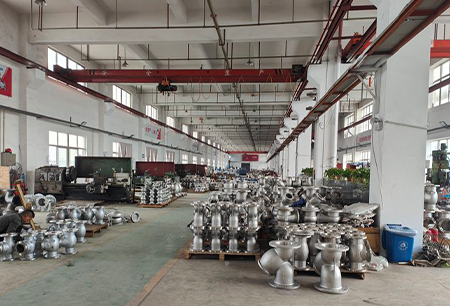check valve piston lift type
Check Valve Piston Lift Type An Overview
Check valves are essential components in a variety of fluid systems, designed to prevent backflow and ensure the unidirectional flow of liquids and gases. Among the different types of check valves available, the piston lift type check valve stands out due to its unique construction and advantages in specific applications.
What Is a Piston Lift Check Valve?
A piston lift check valve is a mechanical device that uses a piston to allow flow in one direction while preventing reverse flow. Unlike traditional swing check valves or ball check valves, which utilize gravity or buoyancy to function, the piston lift check valve operates on the principle of hydraulic force. It typically consists of a cylindrical body, a piston, and a sealing mechanism.
The piston is centrally positioned in the valve body and is designed to move vertically. When fluid flows in the designated direction, the pressure pushes the piston upward, allowing passage through the valve. Conversely, if the flow attempts to reverse, the piston naturally falls back into a closed position, effectively sealing the valve and preventing backflow.
Advantages of Piston Lift Check Valves
1. High Flow Capacity Piston lift check valves generally offer a larger effective cross-sectional area for fluid flow compared to other check valve types. This high flow capacity ensures minimal pressure drop and efficient operation in various systems.
2. Reduced Maintenance Due to their robust construction, piston lift check valves require less maintenance. The design minimizes wear and tear, as the piston does not rely on gravity. This results in longer service life and reduced downtime for repairs or replacements.
3. Versatility These valves can be used in a wide range of applications, including water supply systems, wastewater treatment plants, chemical processing, and HVAC systems. Their ability to handle different types of fluids, including viscous liquids and gases, makes them versatile for many industries.
4. Compact Design The piston lift check valve is often more compact than traditional models, making it suitable for installations where space is limited. Its streamlined design also aids in easier integration into existing systems.
5. Enhanced Sealing The sealing mechanism in piston lift check valves can be designed to provide a reliable and effective seal, reducing the risk of leakage. This attribute is particularly important in systems handling hazardous materials or requiring high levels of reliability.
check valve piston lift type

Applications
Piston lift check valves are widely used in various sectors due to their advantages over other types. In the water industry, they play a crucial role in ensuring the integrity of water supply systems by preventing backflow that could lead to contamination. In wastewater applications, they help maintain proper flow direction and prevent reverse discharge that could disrupt treatment processes.
In industrial settings, piston lift check valves are favored in chemical processing, where the handling of corrosive or volatile substances requires robust and reliable backflow prevention. HVAC systems also benefit from these valves, as they help regulate fluid flow in heating and cooling applications.
Considerations When Choosing a Piston Lift Check Valve
When selecting a piston lift check valve for a particular application, several factors should be considered
- Fluid Characteristics Understand the nature of the fluid being handled, including its temperature, viscosity, and corrosiveness. This helps ensure compatibility with the valve materials and seals. - Pressure Rating Check the pressure and temperature ratings of the valve to ensure it meets or exceeds the operating conditions of the system.
- Installation Orientation Piston lift check valves can typically be installed in either horizontal or vertical orientations. However, specific design considerations may influence the most effective orientation for performance.
- Maintenance Protocol While piston lift check valves require less maintenance, it is still crucial to establish a regular inspection routine to monitor their performance and function over time.
Conclusion
Piston lift check valves are an integral part of modern fluid handling systems, offering a unique balance of efficiency, reliability, and versatility. Their design and functional mechanisms provide significant advantages in preventing backflow, making them a preferred choice in various industrial, municipal, and commercial applications. As technology continues to evolve, further advancements in valve design and materials will likely enhance the performance of piston lift check valves, further solidifying their role in fluid management systems.
-
The Key to Fluid Control: Exploring the Advantages of Ball Valves in Industrial SystemsNewsJul.09,2025
-
The Versatile World of 1, 2, and 3 Piece Ball ValvesNewsJul.09,2025
-
Stainless Steel Ball Valves: The Ideal Choice for Efficient Flow ControlNewsJul.09,2025
-
Optimizing Fluid Control with Ball Float ValvesNewsJul.09,2025
-
Manual Gate Valves: Essential for Control and EfficiencyNewsJul.09,2025
-
Everything You Need to Know About Butterfly ValvesNewsJul.09,2025
-
The Versatility of Wafer Type Butterfly ValvesNewsJul.08,2025




